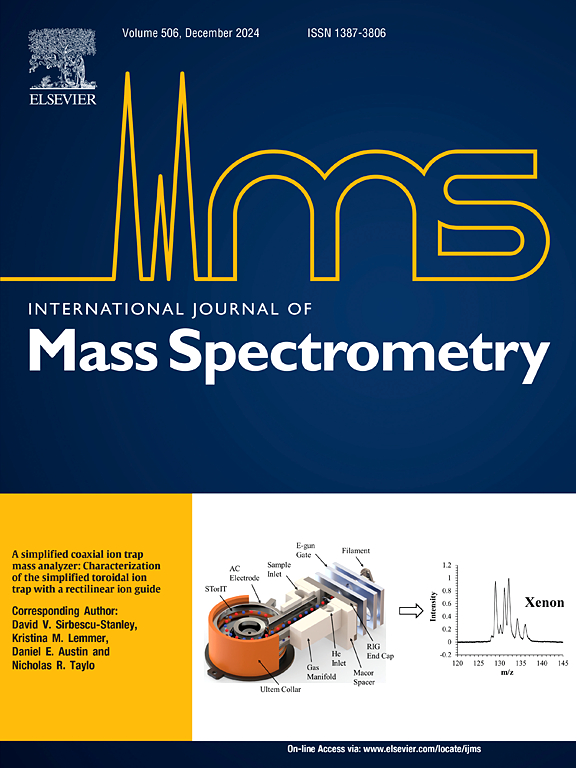Leidenfrost phenomenon-assisted thermal desorption (LPTD) using a metal substrate coated with a fluoro compound: Mechanism of analyte evaporation
IF 1.7
3区 化学
Q3 PHYSICS, ATOMIC, MOLECULAR & CHEMICAL
引用次数: 0
Abstract
In our previous work, direct analyses of low-volatility compounds have been performed using Leidenfrost phenomenon-assisted thermal desorption (LPTD). LPTD is affected by several factors such as substrate temperature, solvent properties, liquid volume, and surface-activity value of the analyte. In this work, the effects of surface properties of the metal substrate on LPTD were investigated by using a metal substrate with and without coating the surface with a fluoro compound. A 5 μL aliquot of 0.03 ppm of cocaine or morphine in methanol was dropped on the heater at 240 °C and mass spectra were measured as a function of time. The heater surface was polished with an abrasive agent with grit number of #5000 (alumina powder with ∼3 μm in diameter). When a non-coated metal was used for cocaine and morphine, analyte evaporation was observed only after the complete evaporation of methanol. However, when the metal surface was coated with a fluoro compound, evaporation of surface-active morphine accompanied by the rapid evaporation of methanol was observed. This is due to the rapid temperature rise of the droplet at the last moment of Leidenfrost phenomenon resulting in the occurrence of flash evaporation of morphine. This phenomenon was not observed for non-surface active cocaine.

使用涂有氟化合物的金属衬底的莱顿弗罗斯特现象辅助热解吸(ltd):分析物蒸发的机理
在我们之前的工作中,使用Leidenfrost现象辅助热解吸(ltd)对低挥发性化合物进行了直接分析。ltd受几个因素的影响,如底物温度、溶剂性质、液体体积和分析物的表面活性值。在本工作中,通过在金属基板表面涂覆氟化合物和不涂覆氟化合物,研究了金属基板表面性能对ltd的影响。取5 μL 0.03 ppm的可卡因或吗啡甲醇溶液滴在240℃的加热器上,测定质谱随时间的变化。用粒度为5000的磨料(直径为~ 3 μm的氧化铝粉)对加热器表面进行抛光。当可卡因和吗啡使用非涂层金属时,只有在甲醇完全蒸发后才观察到分析物的蒸发。然而,当金属表面涂有含氟化合物时,观察到表面活性吗啡的蒸发伴随着甲醇的快速蒸发。这是由于在Leidenfrost现象的最后时刻,液滴的温度迅速上升,导致吗啡发生闪蒸。非表面活性可卡因没有观察到这种现象。
本文章由计算机程序翻译,如有差异,请以英文原文为准。
求助全文
约1分钟内获得全文
求助全文
来源期刊
CiteScore
3.60
自引率
5.60%
发文量
145
审稿时长
71 days
期刊介绍:
The journal invites papers that advance the field of mass spectrometry by exploring fundamental aspects of ion processes using both the experimental and theoretical approaches, developing new instrumentation and experimental strategies for chemical analysis using mass spectrometry, developing new computational strategies for data interpretation and integration, reporting new applications of mass spectrometry and hyphenated techniques in biology, chemistry, geology, and physics.
Papers, in which standard mass spectrometry techniques are used for analysis will not be considered.
IJMS publishes full-length articles, short communications, reviews, and feature articles including young scientist features.

 求助内容:
求助内容: 应助结果提醒方式:
应助结果提醒方式:


